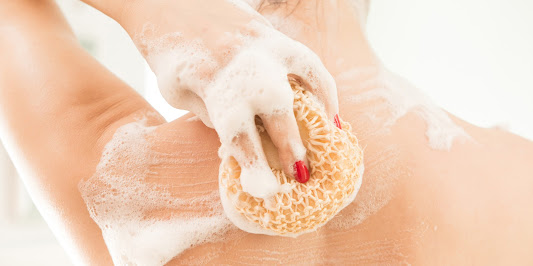Sodium Hypochlorite: The Ultimate Cleaner
Sodium Hypochlorite: The Ultimate Cleaner

Fig. 1. Man in protective suit with disinfectant (Freepik 2020)
Sodium hypochlorite is an everyday chemical used for cleaning cloths and disinfecting surfaces. Sodium hypochlorite is better known as bleach, and the names tend to be interchangeable (Western University of Canada 2015). More specifically, household bleach tends to be a dilute version of sodium hypochlorite, with only 3-6% of bleach being sodium hypochlorite. Bleach has no other active ingredients, it is purely diluted sodium hypochlorite. This being said, it still leaves the question of what precisely sodium hypochlorite is. It has a straightforward chemical structure, a sodium atom attached to an oxygen atom attached to a chlorine atom (Pubchem 2021). Do not be fooled by its simplicity, for this chemical packs quite a punch. When it comes into contact with other substances, it begins to take away their electrons and break their chemical bonds (Sandoval 2009). This is why it is such an effective disinfectant and cleaner. That’s why when you get bleach on a colored shirt, it turns white; it is because bleach has broken down the particles responsible for reflecting color, leaving a light spot wherever it touches. Bleach does not discriminate ethier and will begin breaking down all cells, whether that be healthy cells or viruses. That is why drinking bleach or having contact with bleach is so dangerous. It begins to break apart your cells, essentially dissolving the body (CPID 2021). Household bleach, with its low concentration, will cause irritation if drank or applied to the skin, but in low dosages, it should not be able to kill. The last interesting property sodium hypochlorite posses is its ability to form toxic fumes when combined with other cleaners. It is important not to mix bleach with things like vinegar or ammonia, otherwise, fumes such as chlorine gas can be created and inhaled, blistering the lungs, causing nausea and even pneumonia (Washington State Department of Health). Though bleach is a wonder product, it has its dangers and downsides. An excellent alternative to help disinfect is vinegar, and baking soda does a beautiful job of helping clean and gets rid of stains (Vuong, Tran), (Aguirre 2020). Sadly though, sodium hypochlorite can not be replaced by anyone single chemical.
References
Aguirre, S. (2020, February 21). How to Use Baking Soda for Stain Pretreating. The Spruce. Retrieved February 7, 2021, from https://www.thespruce.com/baking-soda-and-stain-pre-treating-1901052#:~:text=Pouring%20baking%20soda%20on%20a,washing%20through%20the%20regular%20cycle.
CPID. (2002, April). Properties and Health Effects. Consumer Product Information Database. Retrieved February 5, 2021, from https://www.whatsinproducts.com/chemicals/properties_health_effects/1/20
Freepik. (2020, December). Man in white protective suit with reservoir for spraying and disinfection Free Photo. Freepik.Retrieved February 10, 2021, from https://www.freepik.com/free-photo/man-white-protective-suit-with-reservoir-spraying-disinfection_11137981.htm#page=1&query=hazmat+cleaner&position=5
Pubchem. (2021). Sodium hypochlorite. Pubchem. Retrieved February 5, 2021, from https://pubchem.ncbi.nlm.nih.gov/compound/Sodium-hypochlorite.
Sandoval, M. (2009, November 24). How bleach works. How Stuff Works. Retrieved February 6, 2021, from https://home.howstuffworks.com/bleach.htm#:~:text=To%20kill%20germs%2C%20sodium%20hypochlorite,the%20germs%20and%20kills%20them.
Vuong, B. Tran, J. (n.d). Alternatives. Sodium hypochlorite- Bleach. Retrieved February 7, 2021, from https://sodiumhypochlorite-bleach.weebly.com/alternatives.html
Washington State Department of Health. (n.d) Danger of mixing bleach with cleaners. Washington State Department of Health. Retrieved February 5, 2021, from https://www.doh.wa.gov/youandyourfamily/healthyhome/contaminants/bleachmixingdangers
Western University of Canada. (2015, December 11). Guidelines for Using Sodium Hypochlorite as a Disinfectant for Biological Waste. Western University of Canada. Retrieved February 5, 2021, from https://www.uwo.ca/animal-research/doc/bleach-sop.pdf


Comments
Post a Comment